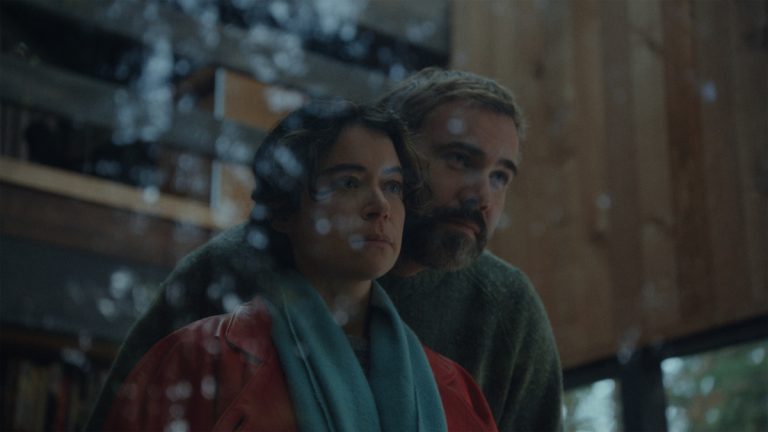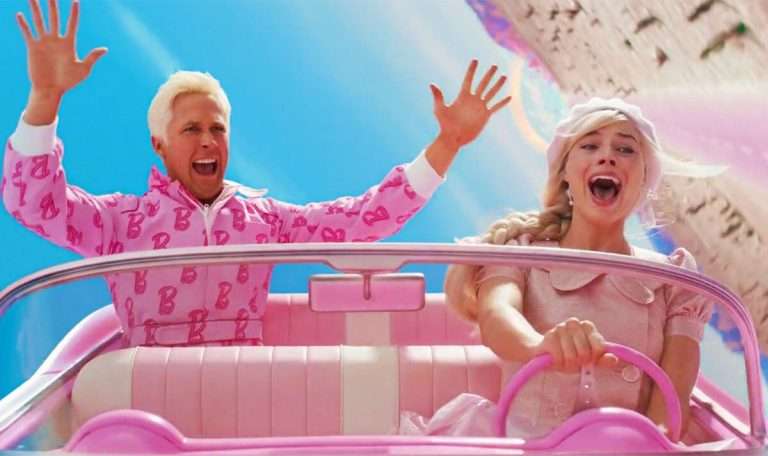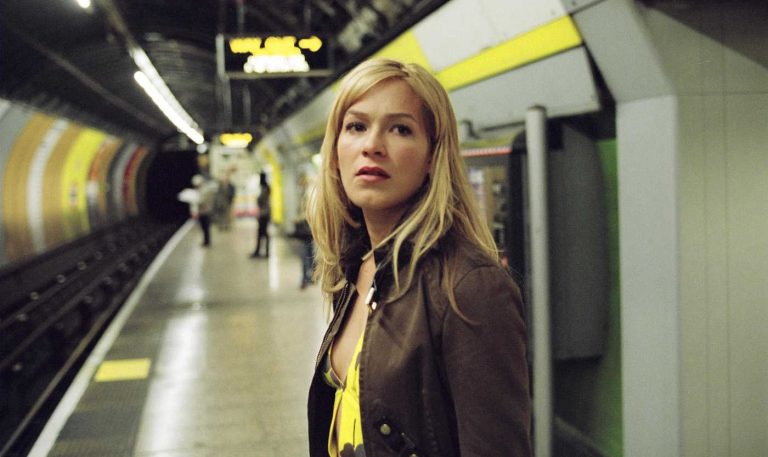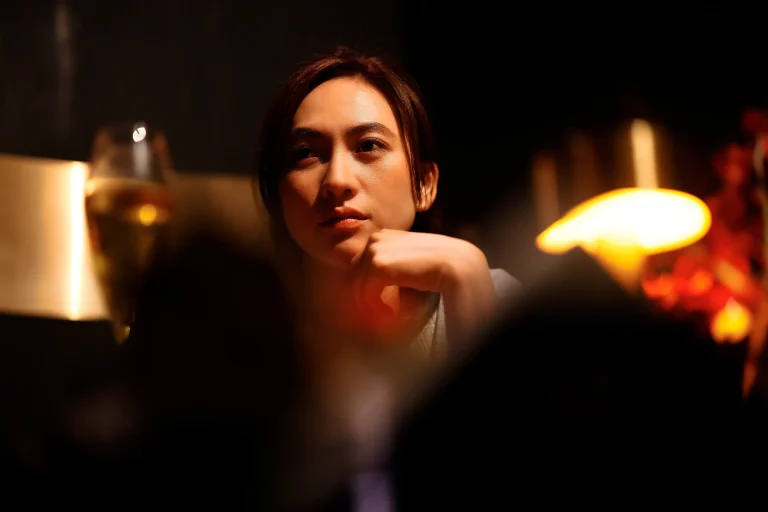True Detective: Night Country (Season 4) Episode 2: I expected “True Detective” to be bleak, dark, and visceral. I did not expect it to become like a Grand Guignol, with dead bodies frozen together to form a sculpture, with legs and heads intermingled to form almost like a bas-relief. And while the staple of “True Detective” is to effectively mix the macabre with the gritty, here, the frozen blood and the snowy dirt give an added texture, which compounds the interconnectedness of the small town of Ennis, Alaska. And let’s not forget the appearance of the ghost and its connection to Season 1, as well as the larger mythology of the series as a whole.
True Detective: Night Country (Season 4) Episode 2 Recap:
When faced with something so wild, baffling, and straining reality, people tend to resort to gallows humor. Perhaps it is not a surprise that upon finding the frozen bodies of the scientists, the immediate afterthought of one of the officers was to take a selfie with one of the frozen heads. So, the outburst from Danvers is justified. It is also quite telling that Danvers points out to the male detectives to “pretend to know what the job is.” It gives added weight to the proceedings and how, even with the post she occupies, Danvers isn’t taken as seriously as she wants to be at times.
The problem with the “sculpture” as well is to separate the bodies. Unfortunately, that leads to a frozen hand being removed from one of the bodies, and to the horror of Danvers and the other investigators, one of the bodies is screaming in pain. Are they alive? Is hypothermia bringing consciousness back, or is it just a form of rigor mortis? Either way, it is surreal and darkly hilarious to a certain degree.
As we learn later, when Elizabeth goes to meet with one of her acquaintances, a high school physics professor named Bryce, she gets a phone call from the hospital, where we learn that “Corpsicle” is currently in an induced coma with an amputated leg. We don’t get to learn how that body was separated from the “sculpture,” but it must have been pretty gnarly. Liz also learns something interesting. The scientists at Tsalal Station had been searching the ice cores for microorganisms with unique properties. While the scientists believed that their work was revolutionary, Bryce believed that the reason it took so long was that it was impossible to extract the material out of the ice core without it getting destroyed, so it was “never going to work.” But the bigger question is, how far along were the scientists?
Questions abound in this episode as we see Navarro talking with Rose back at her cottage. She sees the ghost of her dead boyfriend, Travis Cohle. Yes, you read that right, and yes, it would be surprising if Travis wasn’t the father of Rust Cohle. What that means, other than a deeper connection to Season 1, remains to be seen. Travis, according to Rose, appears when she needs to witness or comprehend something important, and as the last episode suggested, Travis “came out of the ice,” where he had gone to avoid dying of leukemia, to inform Rose about the unnatural deaths. The question is: Why are the ghosts appearing now?
But as we learn from Navarro, her sister also sees ghosts, like her mother used to. However, Rose does warn her that witnessing ghosts is different from mental illness, and maybe her sister needs treatment. Rose also informs Navarro about the spiral symbol that Navarro had seen on one of the bodies in the “sculpture,” which Rose believes to be older than the fabric of Ennis, Alaska itself. But unbeknownst to her, Navarro sees ghosts as well. She sees ghosts when she is driving home and feels the cross has fallen at her feet, and upon touching it, she is bombarded by visions of her mother having an episode. It reminds the viewer of the vision of the polar bear she had seen in the last episode.
Danvers, meanwhile, heads back to the station, where she is met by Captain Ted Connolly, the head of the precinct at Anchorage, who had been responsible for Danvers getting shifted to Ennis, Alaska. Danvers might not want the case, but her residual anger simmers through, and in response to Connolly’s proposal to take over the case at Anchorage, she cites a rule from the Alaskan Investigative Handbook that states that frozen bodies shouldn’t be moved or manipulated, unless it’s a uniquely important situation until they are properly thawed.
The citation gives Danvers 48 hours, during which time she has the bright idea to shift the “corpsicle” to the ice skating rink. For that, she risks a very awkward conversation with the owner of the said rink, who owns it because her husband is the head of the mines, which drives employment opportunities in Ennis, Alaska. It is awkward for Danvers because she might have slept with that woman’s husband, which, if you count the physics professor, brings that tally up to two. Danvers has a pretty active sex life, but it risks awkwardness when it’s in a small town. Later, the bodies are transported to the ice rink, much to the horror and disgust of the rink’s owner. Navarro, too, meets up with Danvers, points out the connection between Annie’s case and this, and urges Danvers to work together.
Danvers stubbornly refuses but does ask Peter to look into the symbol. It also has one of the best scenes of the whole episode, where Danvers teaches Peter to look into the case file and ask the “right questions.” The two key questions that come to focus are: “Who left the clothes neatly folded by the bodies? Was someone with them that day, and if there was, does that prove that a killer was involved rather than this being a result of hypothermia-induced delirium?
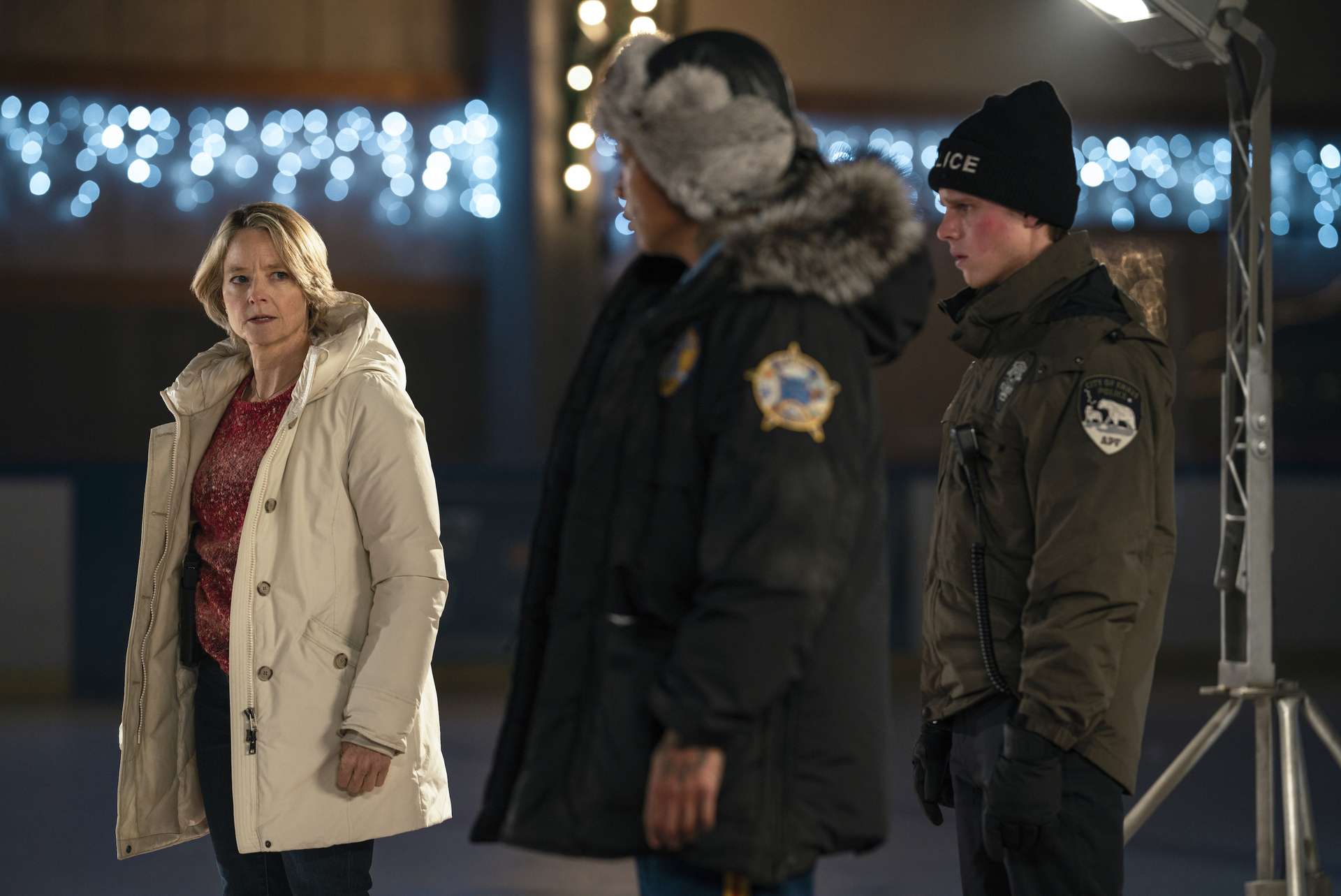
It’s now the search for those right questions that leads to these important clues, but it does come at the cost of the personal lives of Liz and everyone associated with her. For one, Peter is instructed to research the funding of Tsalal Research Station, which traces itself back to the “Tuttle Corporation.” True Detective Season 1 fan should perk their ears up on that name, as that refers to Billy Lee Tuttle, the reverend and head of the sex cult that Rust Cohle and Martin Hart were investigating back in Season 1. Are these just Easter eggs, or are they deeper connections? is a pertinent question, but considering these Easter eggs are turning out to be exceedingly overt, it might be possible that these are legitimate connections beyond the traditional Easter eggs.
Peter is, however, instructed to stay at the ice rink and wait for the bodies to thaw. There, he scrolls through the mobile phone of the scientists, which he had managed to open by retina scanning with the head of the corresponding corpse (hilarious but quite gross). Both Danvers and Peter witness the scene in an Instagram story that opens the first episode of the season. Peter’s choice to stay back does cause friction between him and his partner, which Liz is open to receiving when she goes to fetch her stepdaughter from Peter’s house. Liz’s overreaction upon seeing Leah, her stepdaughter, get the temporary face tattoo (Kakinitt) feels very personal, almost trauma-inducing.
Fascinating that a character, already so flawed, is also compounding her flaws by piling on cultural insensitivity. But then, in a later scene, we see Danvers trying to hang decorations on her Christmas tree, and she experiences a vision of a little boy (half native American, thus he might be Leah’s stepbrother) with whom she is playing with a toy polar bear with a blind eye. We also see a scene between Captain Connolly and Danvers, which brings her tally to three. They have been doing this for “nineteen years,” but instead of whispering sweet nothings, their post-coital conversations involve Connolly not believing in her ability to control the investigation and threatening to take it away from her, which forces her to walk out of that motel in a huff.
Conversely, Navarro’s investigation thread begins at the bar where her sister works, owned by Qaavik, the one Navarro is in a relationship. There, she begins to question Annie’s brother about that spiral but is interrupted by Chuck Mosley. Mosley also blatantly lies when he sees researcher Raymond Clark’s photo. A fight erupts inside the bar between the workers at the mines over the water conditions in the villages, leaving many of the patrons leaving the bar without paying the tab. Interesting bit of world-building there, which had been only hinted at, but it is pretty evident now that the mine is poisoning the water supply of the town. Here’s a theory: what if this poisoned water is somehow responsible for the “mass delirium” that led to the deaths of the scientists, and the supernatural element is an added cherry?
Later, Navarro storms up to Mosley’s house, and when faced with Navarro’s intimidating glare, Mosley breaks down and states that he did recognize that scientist because, about seven years ago, his cousin had sold Clark an old RV. When Navarro asks why he had lied, Mosley replies that he didn’t like her. Navarro corrects him and says he didn’t like Annie and was glad about her death. Mosley could only look away, but that was enough of a confession. We also see Navarro having a very sweet and vulnerable relationship with Qaavik, where she chooses to put her guard down and talk about the case while Qaavik makes pancakes for her. During that conversation, another question is answered: How do you hide a romance? If you can’t find a location, you buy one, and Clark bought the RV because of that.
Back at her office, Danvers had asked Peter to track down all the credit card details, and while browsing through them, she came across details of a tattoo parlor Clark had visited. The tattoo parlor clue not only reveals that Clark had gotten the spiral tattoo but also the model for the tattoo, which is revealed to be Annie, proving that Clark and Annie had been in a relationship together.
This leads to Danvers waiting for Navarro at her house, apparently already having her keys and even knowing where she used to put the cans. There clearly had been a deeper friendship between these two women, and whatever had caused their friendship to break off (the Wheeler incident, presumably) had been irrevocably brutal. Either way, Danvers shows her the case file with the spiral tattoos on both Clark and Annie’s bodies, as well as revealing that the tongue that had been found on Tsalal Station belonged to Annie. So the two cases are connected, and Danvers agrees to work together with Navarro. Strictly work together and walk away. As far as we know, that is definitely not going to happen.
True Detective: Night Country (Season 4) Episode 2 Ending Explained:
Both Danvers and Navarro locate the RV and investigate the inside of it, which is really creepy, with the bones of seals, caribou, and other animals all present on a table. The RV was decorated with Native American paraphernalia, but what was notable was the spiral imprinted on top of the RV and a mannequin lying on the bed of the RV. Clearly, Clark had been involved in something related to the occult, perhaps dealing with the resurrection.
It tracks with what Danvers and Peter had learned about Clark previously while interrogating the cleaning crew who had worked at the Tsalal station. Clark used to be an aloof person and also very weird, and his fellow scientists used to ignore him when his behaviour was significantly off. You compound that with the scribbles in Clark’s journal that Danvers had been combing through, and it was evident that this is a man who either has been enlightened by unfathomable knowledge or has gone completely off the deep end.
Neither of these revelations would put him squarely on the suspect list until Danvers gets a call from Peter and is asked to come to the ice rink. Both Navarro and Danvers reach the ice rink, where the “sculpture” has finally started to thaw so that the figures can be identified, and both Danvers and Navarro realize that Clark’s body is missing. Navarro goes a step further, unequivocally stating that “he is alive.”.
It could be entirely possible that Clark is one of those obvious suspects who has all the evidence pointing toward him, but the story itself is enticing, and the dynamics of the characters are fascinating enough that the viewers are combing through the case in real-time with the investigators. Even the interstitial stories, like Hank’s anger at Peter for stealing the file or Hank’s pretty apparent hatred of Danvers, are fascinating in their own right. But it’s the immediacy of the narrative, rather than its overarching connection to a larger mythology, that’s drawing me in and interesting me more, and that bodes well for the narrative.




![Red Beard [1965] Review: End Of A Glorious Era](https://79468c92.delivery.rocketcdn.me/wp-content/uploads/2020/06/red-beard-cover-2-768x432.jpg)
![Hellraiser [2022] Review: Clive Barker’s hellish vision comes to life in a good-looking but staid remake](https://79468c92.delivery.rocketcdn.me/wp-content/uploads/2022/10/Hellraiser-2022-Movie-Review-1-768x449.jpg)
